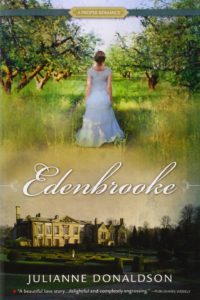 This is the first of a three-part series reviewing the last decade’s bestselling and award-winning genre novels by LDS authors. This section on romance novels will be followed by sections on youth fiction and adult speculative fiction.
This is the first of a three-part series reviewing the last decade’s bestselling and award-winning genre novels by LDS authors. This section on romance novels will be followed by sections on youth fiction and adult speculative fiction.
The indefatigable James Goldberg wrote a really fascinating summary of the last decade in Mormon arts which highlighted a broader array of Mormon artistic efforts than this essay will. I’m a novel type of gal and so intend to highlight some of the work done specifically by novelists, some of which James briefly touched on in his essay. What makes the decade of 2010-2020 unique is that it’s the first full decade that we can track award data from the Whitney Awards. It’s become a way for me to trace the careers of many authors and also some of the major trends.
By 2019 the Whitney Awards had expanded to 10 categories with five nominees in each category, recognizing 50 novels. At the start of the decade in 2010, the award was still capped at 35 novels per year and that remained until 2012 when the categories for Middle Grade and Best Debut author were added. In 2017 a category for Historical Romance was added and Fantasy YA, bringing the awards to a record 11 award categories–55 recognized novels. In 2018 and 2019, the Historical category was nixed, which led the committee to add a handful of historical fiction into the general fiction category for both years. I don’t like how this penalizes writers of adult literary fiction. Yet, I am hopeful that if BCC Press and other creative efforts create a boom in this field that the Whitney Award committee will adjust the categories in response.
So, let’s look at what some observations can tell us about what Mormons are writing. First, the dominance of the romance novel, the proliferation of youth fiction, and our fascination with speculative fiction.
The growth of romance by the end of the decade
In 2010 there were only five Whitney Award nominees for romance but by the end of 2019 there were 10. In addition, many titles that are nominated in other genres have strong romance plots or subplots. This trend is only emphasized by the fact that general fiction declined in popularity.
We saw the beginnings of the very popular trend of Regency romance in 2008 and 2010 with the recognition of Sarah M. Eden’s titles SEEKING PERSEPHONE and COURTING MISS LANCASTER. Then EDENBROOKE by Julianne Donaldson had runaway success. Crazy runaway success. Arguably, the romance book of the decade success. It was one of the first titles in Shadow Mountain’s Proper Romance line, which paved the way for many other authors to publish under the same brand. Donaldson’s BLACKMOORE took the Romance Whitney the next year too. The year 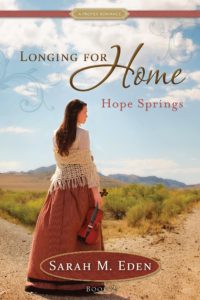 after that Sarah M. Eden took the award with her Western Romance LONGING FOR HOME: HOPE SPRINGS also under the Proper Romance brand. HOPE SPRINGS was a sequel to LONGING FOR HOME, published the previous year, and was recognized with an AML Award, a RONE Award, and SWOONY Award. Mid-decade, Josi Kilpack‘s LORD FENTON’S FOLLY (2015) and Nancy Campbell Allen‘s MY FAIR GENTLEMAN (2016), by both Proper Romance titles, took the awards. By this time the historical romance trend in the market had expanded so
after that Sarah M. Eden took the award with her Western Romance LONGING FOR HOME: HOPE SPRINGS also under the Proper Romance brand. HOPE SPRINGS was a sequel to LONGING FOR HOME, published the previous year, and was recognized with an AML Award, a RONE Award, and SWOONY Award. Mid-decade, Josi Kilpack‘s LORD FENTON’S FOLLY (2015) and Nancy Campbell Allen‘s MY FAIR GENTLEMAN (2016), by both Proper Romance titles, took the awards. By this time the historical romance trend in the market had expanded so  much that a separate Historical Romance category was added to the awards. The following year, LIES JANE AUSTEN TOLD ME by Julie Wright took the Whitney. Again, a Proper Romance title. Finally, in 2018 the reign of the Proper Romance titles was broken when SEEING MISS HEARTHSTONE by Nichole Van took the Whitney home. The same year, Melanie Jacobson, after being a finalist eight times, took home a Whitney with her Covenant title PERFECT SET.
much that a separate Historical Romance category was added to the awards. The following year, LIES JANE AUSTEN TOLD ME by Julie Wright took the Whitney. Again, a Proper Romance title. Finally, in 2018 the reign of the Proper Romance titles was broken when SEEING MISS HEARTHSTONE by Nichole Van took the Whitney home. The same year, Melanie Jacobson, after being a finalist eight times, took home a Whitney with her Covenant title PERFECT SET.
William Morris critiqued the Whitney Awards at the beginning of the decade for being an award for LDS publishers Covenant Communications and Deseret Book. While this remained mostly true as CROSS MY HEART by Julie Wright and LOVE AT FIRST NOTE by Jenny Proctor were the other Romance Whitney Award winners for the decade, 2019 saw a departure from this trend in both Romance categories. Both FINDING JACK by Melanie Jacobson and WHAT THE WIND KNOWS by Amy Harmon were books not contracted by Covenant Communications or Deseret Book. Indeed, all the finalists in the Contemporary Romance category were, to my best knowledge, indie-published writers. Covenant’s retreat from contemporary fiction in favor of historical may explain some of this shift. Still, the fact is that indie romance is booming and authors are getting savvier at marketing their books.
Several Mormon writers won the Contemporary: Sweet category in the RONE Awards, a magazine that honors excellent fiction from small press and indie writers: SWEET CONFECTIONS by Danyelle Ferguson (2015), VOCAL CRUSH by Lisa Swinton (2016), MIX’ MATCH by Lindzee Armstrong (2017).
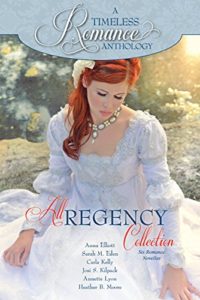 In addition, H.B. Moore’s publishing company Mirror Press launched her own TIMELESS ROMANCE ANTHOLOGY Brand. The first installment WINTER COLLECTION debuted in 2012 was incredibly successful and spawned Spinoff Anthology Collections TIMELESS VICTORIAN COLLECTION, TIMELESS WESTERN COLLECTION, TIMELESS REGENCY COLLECTION, and TIMELESS SINGLES COLLECTION. In addition, Mirror Press provided a way for Sarah M. Eden to continue publishing 3 novels and a novella in the HOPE SPRINGS series. Including the 2017 Whitney Award winner LOVE, REMAINS. Mirror Press has also published two series by Whitney Award Winner Michele Paige Holmes (2007, COUNTING STARS). The TIMELESS ROMANCE ANTHOLOGY
In addition, H.B. Moore’s publishing company Mirror Press launched her own TIMELESS ROMANCE ANTHOLOGY Brand. The first installment WINTER COLLECTION debuted in 2012 was incredibly successful and spawned Spinoff Anthology Collections TIMELESS VICTORIAN COLLECTION, TIMELESS WESTERN COLLECTION, TIMELESS REGENCY COLLECTION, and TIMELESS SINGLES COLLECTION. In addition, Mirror Press provided a way for Sarah M. Eden to continue publishing 3 novels and a novella in the HOPE SPRINGS series. Including the 2017 Whitney Award winner LOVE, REMAINS. Mirror Press has also published two series by Whitney Award Winner Michele Paige Holmes (2007, COUNTING STARS). The TIMELESS ROMANCE ANTHOLOGY 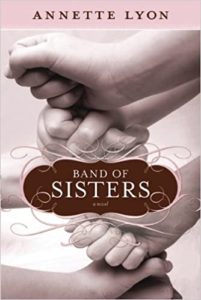 brand has collected RONE awards almost yearly since 2012. Indeed, Whitney Award Winner Annette Lyon (BAND OF SISTERS, 2010) has published so many romance novellas under the brand that she has her own collection and could be considered a career novellaist. Indeed, Utah has awarded her BEST OF STATE awards four different years for her work in short fiction.
brand has collected RONE awards almost yearly since 2012. Indeed, Whitney Award Winner Annette Lyon (BAND OF SISTERS, 2010) has published so many romance novellas under the brand that she has her own collection and could be considered a career novellaist. Indeed, Utah has awarded her BEST OF STATE awards four different years for her work in short fiction.
We haven’t even touched the prolific career of Jennifer Peel, who is a mainstay of the Swoony Awards. Also, the deft switch 3 time Whitney finalist Sariah Wilson made from writing Book of Mormon themed romance novels to Bestselling Amazon Romance novelist, one of the winners of Amazon’s Kindle Scout program. She ended up creating a Kindle Worlds that Annette Lyon and Rachel Ann Nunes (BEFORE I SAY GOODBYE, 2011) also took advantage of publishing in.
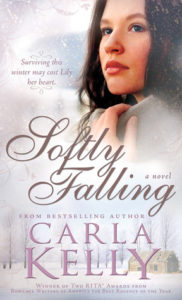 Jennifer Moore made a big splash with her debut BECOMING LADY LOCKWOOD which took a Whitney Award home in 2014. She has become a historical romance staple for many readers and has taken five more Whitney Nominations. Carla Kelly should also be recognized for taking home three Whiney Awards. Two novels for historical fiction– SOFTLY FALLING, 2014 and MY LOVING VIGIL KEEPING, 2012. She also won one Whitney Award in Romance–BORROWED LIGHT, 2011.
Jennifer Moore made a big splash with her debut BECOMING LADY LOCKWOOD which took a Whitney Award home in 2014. She has become a historical romance staple for many readers and has taken five more Whitney Nominations. Carla Kelly should also be recognized for taking home three Whiney Awards. Two novels for historical fiction– SOFTLY FALLING, 2014 and MY LOVING VIGIL KEEPING, 2012. She also won one Whitney Award in Romance–BORROWED LIGHT, 2011.
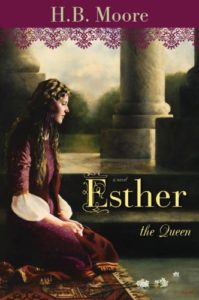 Heather B. Moore/H.B. Moore is one of the most recognized authors in the Whitney Awards. Most of her nominations are for biblical fiction and ESTHER THE QUEEN in 2013 took the Historical Whitney Award. CONDEMN ME NOT took the 2017 Historical Award. She has also received nominations in the Speculative, Suspense and Romance categories. In 2013, four of her titles were nominated for Whitneys in Historical, Speculative, Mystery/suspense, and General. For her prolific output, collaborative spirit, and ambitious drive I’d name her the Mormon Female Writer of the Decade.
Heather B. Moore/H.B. Moore is one of the most recognized authors in the Whitney Awards. Most of her nominations are for biblical fiction and ESTHER THE QUEEN in 2013 took the Historical Whitney Award. CONDEMN ME NOT took the 2017 Historical Award. She has also received nominations in the Speculative, Suspense and Romance categories. In 2013, four of her titles were nominated for Whitneys in Historical, Speculative, Mystery/suspense, and General. For her prolific output, collaborative spirit, and ambitious drive I’d name her the Mormon Female Writer of the Decade.
Looking into the Future of Mormon-written Romance
I keep wondering if the Regency Romance popularity will wane but it seems unlikely as fans of Julia Quinn are rabidly consuming the TV series Bridgerton. This trend probably still has quite a few more years in it. It will be interesting to see this year if the initial popularity of the Bridgerton show brings more readers/buyers to the market and only makes the trend stronger. If the wind blows the right way, instead of burning out this trend could explode on the national scene in a dramatic way. It would be fun to watch. I’ll cross my fingers.
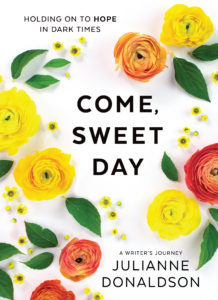 Other things of note are that I think small presses like BCC Press and Mirror Press might be influencing the DB and Covenant brand to try new things. First, Julianne Donaldson is set to release a volume of poetry with Shadow Mountain in 2021. Again, Julianne Donaldson is special, she’s- romance-book-of-the-decade special, but this is a huge deal from my perspective. Will Deseret Book now publish poetry collections? I hope the audience that BCC Press has courted will support Donaldson’s poetry and I really hope that some of Donaldson’s audience will discover the other Mormon poets published by BCC. It would be wonderful to see our artists mutually nurture a niche audience to support this type of work.
Other things of note are that I think small presses like BCC Press and Mirror Press might be influencing the DB and Covenant brand to try new things. First, Julianne Donaldson is set to release a volume of poetry with Shadow Mountain in 2021. Again, Julianne Donaldson is special, she’s- romance-book-of-the-decade special, but this is a huge deal from my perspective. Will Deseret Book now publish poetry collections? I hope the audience that BCC Press has courted will support Donaldson’s poetry and I really hope that some of Donaldson’s audience will discover the other Mormon poets published by BCC. It would be wonderful to see our artists mutually nurture a niche audience to support this type of work.
Another thing that is new coming out of Covenant Communications is more frequent anthologies al la Timeless Romance Anthologies. Until this year, most of them were Christmas and holiday-themed. They released a mystery/suspense themed one in fall 2019. This month, Covenant announced the release of a Western romance anthology in July 2021. Since it is not holiday-themed it stands apart from the norm. It’s a little bit exciting. Will they release other general-themed anthologies? Will this become a new trend? It will definitely give more opportunities to writers.
There are whispers in the national market of embracing more author collaboration series. Covenant is not new to this game and already has an Orient Express author collaboration planned for 2021. Indeed, two out of the five 2019 Whitney nominated titles in the Romance category were from collaborative writer projects.
Emily Debenham graduated from BYU with a double degree in Latin and History teaching. She taught high school Latin for two years in Houston, Texas. She helped her husband launch seven indie titles, the most popular of which was Wolfhound. She is a three-time finalist in the Mormon Lit Blitz. She maintained a book review blog, Gamila’s Review, for five years. She launched the LDS Picture Book Project, where she spotlighted and sometimes interviewed LDS authors of picture books.

Thanks, Emily. This is a fantastic round up.
It’s not a surprise that much of the Mormon romance has gone indie over the past decade. The rest of the romance world has done the same. I do think that Mirror Press has been a particular success.
The one question I have is where the romance novels are that feature Mormon content. I understand why both writers and core readership moved away from that. But I would love to see one or more of the current Mormon romance authors (or someone new to the scene) attempt to revive the contemporary Mormon romance novel
(and it’s possible that there are authors out there doing that, and I’m just not aware of their work).
I think maybe 2021 might be the death of the contemporary Mormon romance novel? I keep waiting for news that Covenant or DB is going to publish even one. Melanie Jacobson and Tiffany Odekirk ( the most likely authors to publish such works) haven’t announced their releases for the year yet. Maybe Sally Johnson will publish one? Sarah Alva should publish another Mormon Contemporary romance to follow up The Doctor and the Midwife this year, I think. No news on it yet. Shattered Within by Sara Fitzgerald made a splash last fall. She seems to indie publish a novel every other year or so. The best place to find one of these increasingly rare books is in Jennie Hansen’s review column for Meridian Magazine. Maybe I’ll ask about plans for any contemporary romance releases at Covenant and see what response I get.
I keep hoping that the Mormon Lit Lab will resurrect Sarah Dunster’s shelved Mormon romance novels.
Worst fears confirmed. Amy Parker says no LDS romances will be published by Covenant in 2021. Several contemporary inspirational titles will be published by Chalon Linton and Anneka Walker. The market covenant caters to won’t read and buy them. I am very very sad. We have hated and hated and hated our own literature out of existence. What else is left?
Wow. Thanks for doing that reporting, Emily. That’s unfortunate. Not necessarily surprising, but quite unfortunate.
One of the first works of Mormon fiction I read was actually a contemporary (for then) Mormon romance novel (written by my Sunday School teacher Kristen Randle).
As William says, “Wow. ” That’s a shame. Especially considering the modern LDS fiction novel market essentially got its sputtering proto-start back in 1977 with Shirley Sealy’s BEYOND THIS MOMENT Mormon-centric romance novel.
I remember reading my Mom’s copy of BTM (purchased at the local Seventies bookstore — remember those?) that she’d been passing around by hand to other sisters in the ward like some Soviet samizdat. I read it because, other than ADDED UPON, there were no other LDS novels to read. Not in rural Utah in 1977.
Many thanks for the decade wrap up, Emily, both this one and the YA one. The early 2010s and start of the Whitneys is just about when I fell almost completely out of touch with the Mormon market save sci-fi (not that I was keeping up all that well in the previous decade what with 9/11 and several tours in Iraq). These wrap-ups, along with James Goldberg’s recent roundup, are the comprehensive reviews I need to get back up to speed on what’s been going on.
I remember around 2000, authors who wanted to publish with Deseret Book or Covenant complained that they had to include some Mormon content or characters. Sometimes they barely mentioned Mormonism to get their books considered. Many talked about the great freedom they got when they started getting around the requirement by setting their novels in pre-restoration eras, like the Regency. Interesting to see it has gone so far the other way, with DB/Covenant publishing so few romances with any Mormon content.